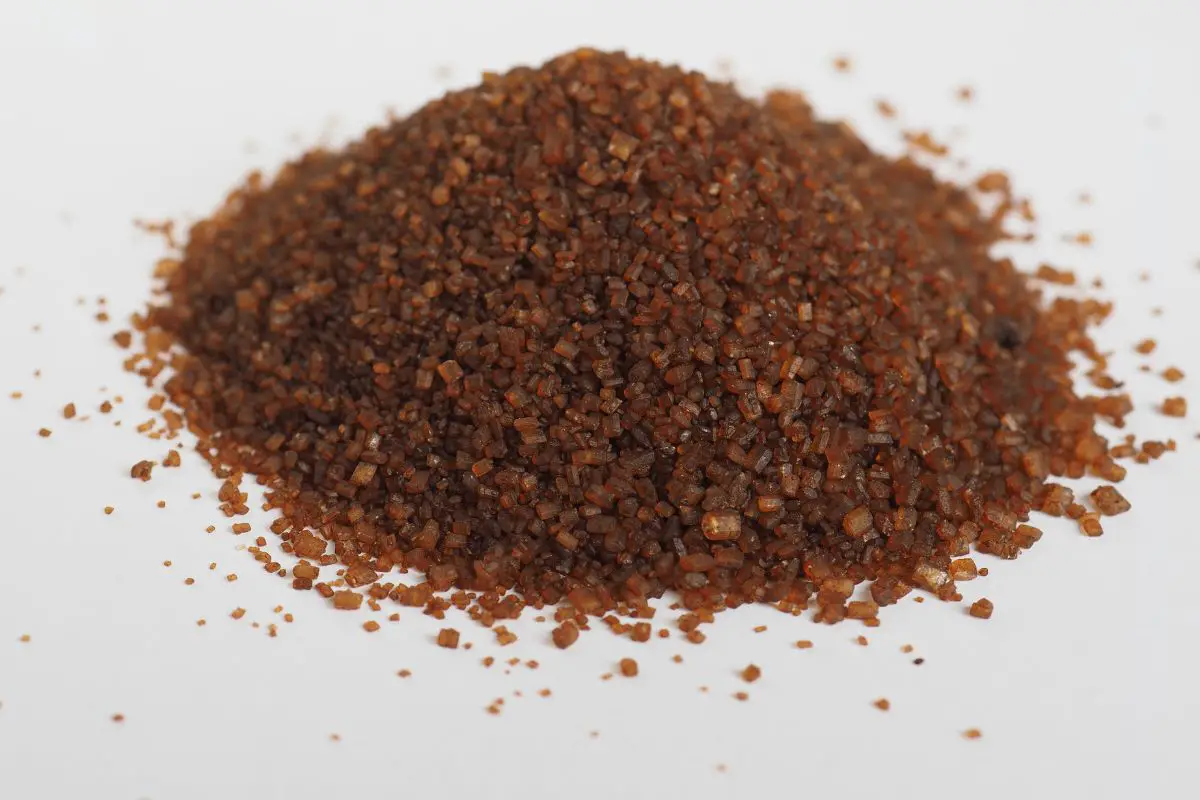Light brown sugar uses less molasses, while dark brown sugar uses nearly twice as much molasses. This higher molasses content gives dark brown sugar its color and a rich caramel flavor.
Brown sugar is an essential baking ingredient. Two types of brown sugar are available at grocery stores: light and dark brown.
Are you wondering what the difference between light and dark brown sugar is? Are you confused about which one you should choose and when? Dive right in to find out all your answers.
Table of Contents
All You Need To Know About Brown Sugar
Brown sugar is prepared by adding molasses syrup from sugarcane to boiling raw sugar crystals resulting from the primary sugar-refining process. It is also made by coating white granulated sugar with molasses, giving it a brown color.
The brown sugar produced depends on the amount of molasses used during production.
If the manufacturers add more molasses from sugar cane, it becomes dark brown sugar. However, the quantity of molasses for light brown sugar is more minor. Despite the production method, brown sugar generally contains at least 85% of sucrose or table sugar.
How to Make Light Brown Sugar
Step 1: Add one tablespoon of molasses for every cup of white granulated sugar to make light brown sugar.
Step 2: Mix it thoroughly in a large mixing bowl or food processor so that the syrup spreads evenly all over the sugar and the sugar absorbs it well.

How to Make Dark Brown Sugar
For dark brown sugar, you need to add more molasses.
Step 1: Instead of one tablespoon for every cup of white granulated sugar, add two tablespoons of unsulfured, mild variety molasses flavor to every cup of white granulated sugar.
Step 2: Mix it thoroughly in a large mixing bowl or food processor so that the syrup spreads evenly all over the sugar and the sugar absorbs it well.

Difference Between Light and Dark Brown Sugar
| Light Brown Sugar | vs. | Dark Brown Sugar |
| Contains more molasses | Composition | Has fewer molasses |
| Adds soothing light color | Difference In Color | Offers a darker shade to food |
| Gives a lesser rise but a good spread | Effect On Preparation Process | Leads to a higher rise and broader spread |
| Weighs less | Weight Composure | Weighs more |
| Compatible with other ingredients | Compatibility With Other Ingredients | Compatible with other components but has a strong aroma and flavor. |
| Healthy and preferred for its caramel taste | Uses | Ideal for complex recipes that need a richer flavor. |
If you enjoyed this post and want to explore sweet treats even more, check out our post comparing macarons and macaroons.

